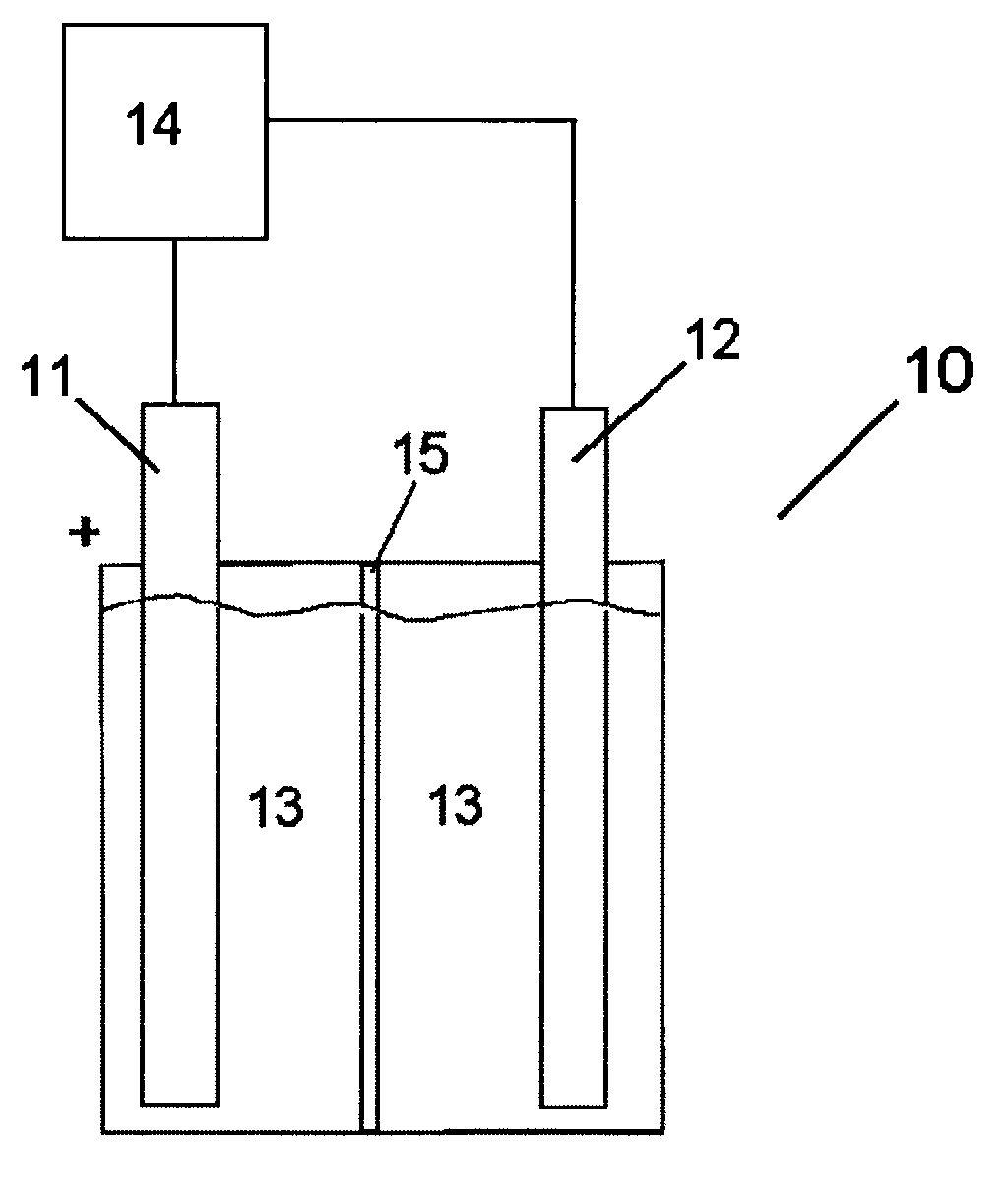Method for producing and transporting hydrogen
a technology of hydrogen and hydrogen transport, applied in the direction of electrodes, electrolysis components, energy input, etc., can solve the problems of carbon monoxide and carbon dioxide production, all methods, benefits and disadvantages, and virtually unlimited hydrogen supply
- Summary
- Abstract
- Description
- Claims
- Application Information
AI Technical Summary
Benefits of technology
Problems solved by technology
Method used
Image
Examples
Embodiment Construction
[0017]The present invention provides an improved method of collecting and transporting hydrogen produced via electrolysis to end users. The improved method eliminates the need for collecting the produced hydrogen, compressing the hydrogen, and transferring the hydrogen to a safe medium for transportation. The improved method produces hydrogen and immediately stores the hydrogen in a safe medium ready for transportation to end users.
[0018]The electrolytic cell 10 as used in accordance with the present invention is depicted in FIG. 1. The electrolytic cell 10 includes an anode 11 and a cathode 12. The anode 11 and cathode 12 are placed in an electrolyte solution 13 and a current from a power source 14 is applied across the electrodes thereby forming hydrogen at the cathode 12 via electrolysis. The anode 11 and the cathode 12 may be separated by a membrane 15 which allows the transfer of hydroxyl ions and water from one side of the electrolytic cell to the other. The membrane 15 is use...
PUM
| Property | Measurement | Unit |
|---|---|---|
| diameter | aaaaa | aaaaa |
| diameter | aaaaa | aaaaa |
| diameter | aaaaa | aaaaa |
Abstract
Description
Claims
Application Information
 Login to View More
Login to View More - R&D
- Intellectual Property
- Life Sciences
- Materials
- Tech Scout
- Unparalleled Data Quality
- Higher Quality Content
- 60% Fewer Hallucinations
Browse by: Latest US Patents, China's latest patents, Technical Efficacy Thesaurus, Application Domain, Technology Topic, Popular Technical Reports.
© 2025 PatSnap. All rights reserved.Legal|Privacy policy|Modern Slavery Act Transparency Statement|Sitemap|About US| Contact US: help@patsnap.com



